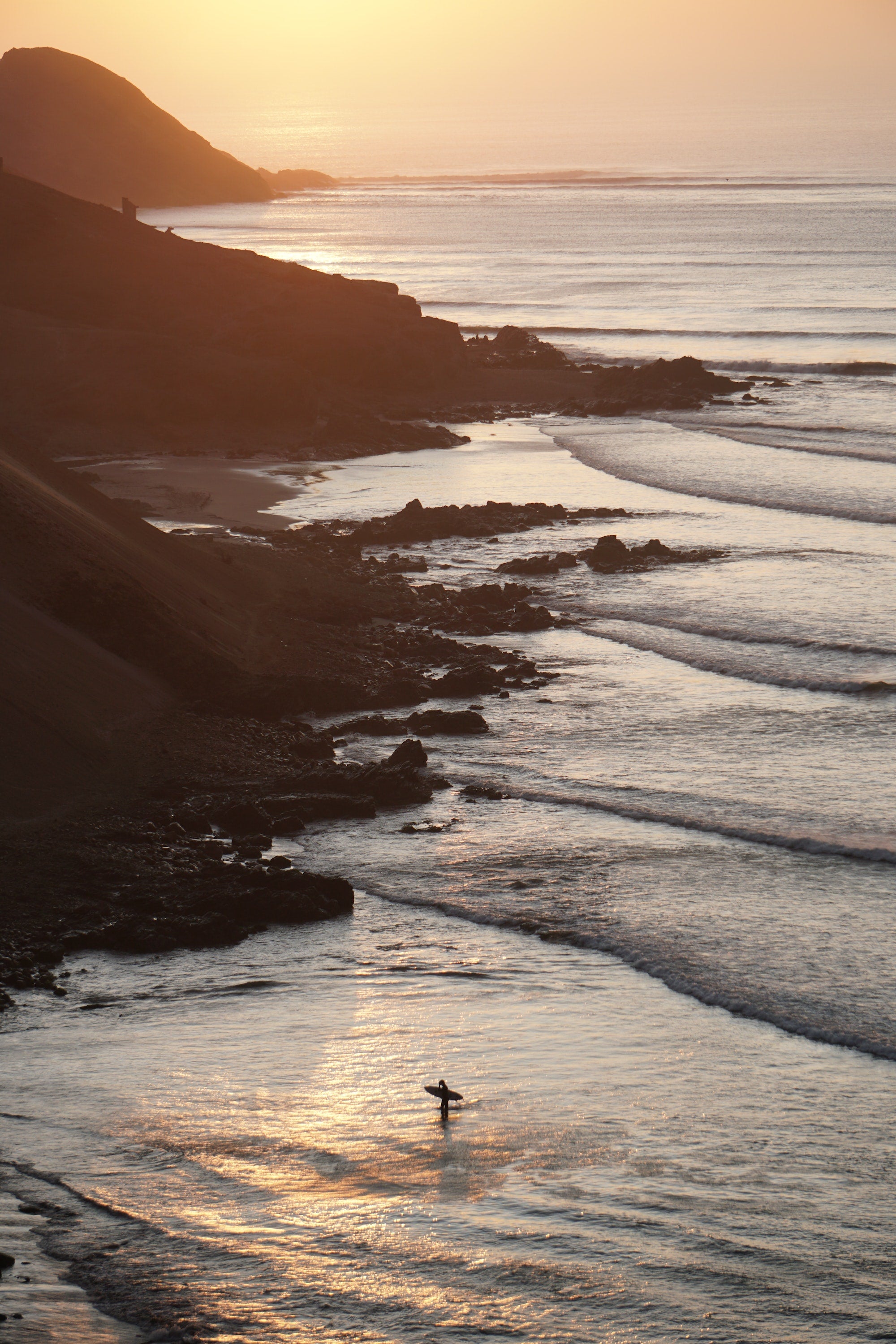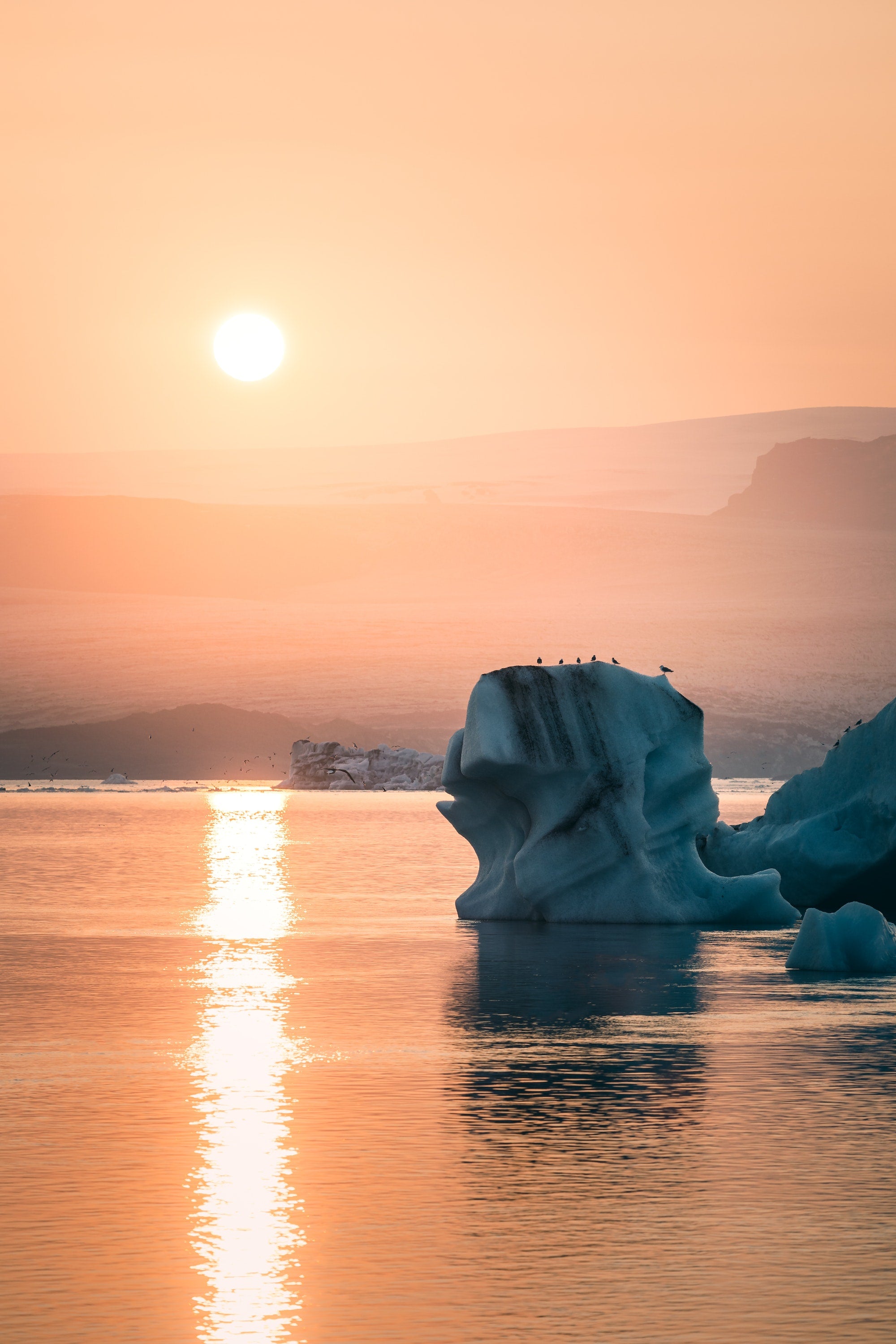
Uncovering Unique Surf Spots with Luke Gartside
Discover the devotional practice of wave riding through an atlas of iconic surf locations from around the world.
Surf beneath the northern lights in Norway, warm yourself up on Ghana’s equatorial waves, or dance down your longboard in Waikiki; The Surf Atlas, a collection of the world’s most unique, unusual, and iconic surf destinations, has it all.
Photographer and writer, Luke Gartside, is the former editor of Wavelength Magazine, Europe’s longest running surf title, and recent collaborator on The Surf Atlas. For more than ten years, Luke has been chronicling surf culture around the world, meeting intriguing characters along the way. We spoke with him about the creation of the book, what the future of surf culture holds, and (of course), his favorite surfing spots around the globe. Here’s what he had to say.
Hi Luke, could you share some information about your background, and how you were introduced to surfing? Despite growing up a long way from the coast, I’ve been fascinated by surfing for pretty much as long as I can remember. As a little kid, whenever we went to the beach, all I wanted to do was take a bodyboard out and try and catch waves, even if there weren't any. My dad was an avid surfer in his youth and when I was about twelve, he took us on a family holiday down to Cornwall and booked my sister and me into a surf lesson. From that moment forth, I was hooked.
You’ve been chronicling surf culture around the world for over ten years now. Was there a specific moment, or individual, that inspired you to begin this journey? As a teenager, I got really into filming and taking photos, and would shoot all sorts of different sports, from wakeboarding to BMXing, but surfing was always my favorite thing to point a camera at. The 2000s were the golden age of surf discovery in Britain and Ireland and every month I’d get surf magazines full of stories about new waves being pioneered. There was a whole raft of amazing surf photographers capturing these adventures at the time, but Mickey Smith’s work had the biggest impact on me. He found many of the now iconic big waves on Ireland’s west coast and would swim out and capture them up close from the water, with a masterful eye for composition, color and light. As soon I left school, all I really wanted to do was chase waves. After working for a bit as a nightclub photographer and in a camera shop, I bought a little van and spent a few months driving around Europe visiting all these places I’d been studying photos of for years. A few months later, I went to Bali and did the same there, whipping around on a moped. Those were definitely formative years for me, as it was during those trips I was first compelled to start writing about surfing too.
What makes a surf spot unique or unusual in your eyes? From a photographic perspective, I’ve always been interested by the geography of each surf spot – the landscape that surrounds it, and the unique features that determine the shape and size of the waves. There are often interesting stories attached to both the natural and man-made processes that have created each break. Some of the most iconic waves on earth were born of human intervention, like the Superbank on Australia’s east coast, which formed thanks to serendipitous sand dredging, or Newport Wedge in California, which was created by the construction of a huge break wall. Others come courtesy of natural phenomena, like in Nazaré, Portugal – home to the largest waves ever surfed – where an underwater trench almost three times the depth of the Grand Canyon morphs swell into giant teepee-shaped peaks. Or at Teahupoo in Tahiti, where the awe-inspiring barrels are created by the specific angle of the reef.
Beyond the physical geography, I think the nature of the surf communities that spring up around each spot is what really makes them unique. Often, the distinct character of these scenes mirrors the qualities of the wave to which they are dedicated. In Malibu, California for example, the long, easy-paced peelers of First Point– and the cruisy approach they demand – is arguably what gave birth to the SoCal beach culture now famous all over the world. At the other end of the spectrum is Mavericks, located just 26 miles up the coast, a fierce and formidable big wave spot, full of sharks and sharp rocks, that bred a local community as tough and dogged as Malibu’s surfers were laid back.

(Photo: Courtesy of Sebastian Keim, The Surf Atlas)
Have you experienced a shift or evolution of surf culture over time? I think the main shift has been an explosion in participation. Over the last 30 years, surfing has taken off in every corner of the globe, from Senegal to Poland, Siberia to Nicaragua. In turn, this has led to a diversification of the culture as a whole, ushering in new perspectives, aesthetics, and wave-riding styles.
Similarly, the move from centralised media to online platforms has allowed surfers from all parts of the world to tell their own stories – rather than waiting for a magazine to send a correspondent to them – and allowed audiences to connect directly with the surfers who resonate with them personally. The net effect has been more widespread appreciation for styles and approaches that might have been overlooked by traditional surf magazines. Women’s longboarding, for example, was considered pretty niche before Youtube and Instagram, but now it's among the most widely watched of the sport’s many different disciplines.
What do you hope readers will take away from The Surf Atlas? First and foremost, I hope it provides an intriguing testament to the dizzying diversity of our surfing world. Of course, since it’s largely a book about adventure, I’d love for it to inspire people to visit the places featured, whether they’re on the other side of the world or just down the road. I hope the stories will encourage people to engage with the elements that make each place unique, including the history and local customs. There are also a few suggestions in the text for how we can have a positive impact on the places we go – simple things like buying a locally shaped wooden board in Papua New Guinea or helping out with turtle conservation efforts in Costa Rica.
Is there a surf spot you are yet to visit, but would love to see someday? I’ve always had a pretty long list but during the process of making this book, it got a whole lot longer! In truth, I’d love to go to every single place I wrote about. However, if I had to narrow it down, I’d say Peru and Mexico are probably at the top of the list. Closer to home, I’ve always wanted to visit more of the small islands and remote coasts of Europe and the North Atlantic, as many of my favourite surf trips thus far have been in that part of the world.
How was your experience in creating The Surf Atlas together with gestalten? It was a pleasure working on the book with the team at gestalten. Coming from a surf publishing background, I’m used to spinning lots of plates at once. For this project, it was great to be able to tap into the team’s wealth of experience when it came to things like editorial management and photo acquisition, allowing me to focus purely on the content. Gestalten’s reputation for producing such high-quality works in the surfing space meant almost all of the many photographers we approached were really excited to submit their work.
What are your hopes for the future of surf culture? I hope that surfing continues to grow outwards in every direction, from the fun-centric resurgence of forgotten surf craft like the wooden bellyboard, to the women battling each other for big wave world records. For me, it’s this strange web of disparate ambitions and evolutionary trajectories that makes the culture so unique.
As a lover of good stories, I look forward to hearing fresh narratives emerge from surfing’s new strongholds across the globe. And, as a lover of good discovery stories, in particular, I hope there are still waves out there yet to be found. Above all, I hope surf culture continues to breed environmental custodians, ready to rally together and protect the delicate marine ecosystem on which our passion so heavily relies.

(Photo: Courtesy of Emy Dossett, The Surf Atlas)
Extended across six regions—Africa, Asia, Europe, Central and South America, North America, Oceania and the Pacific—The Surf Atlas celebrates exploration, adventure, and the dizzying diversity of our surfing world. It’s time to ovewith the tides, so grab your board—surf’s up!


